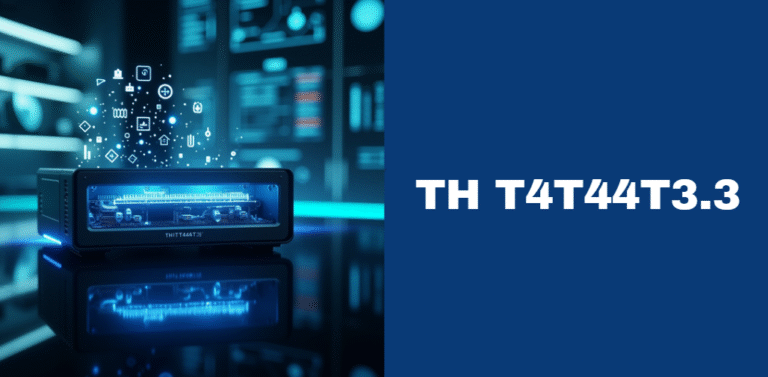BE78N-S7J-E: Complete Guide to This Powerful Industry Identifier
In the modern era of digital transformation, identifiers like BE78N-S7J-E play a critical role in improving operational efficiency across industries. Whether you’re working in manufacturing, healthcare, or IT, the need for precise tracking, authentication, and categorization has never been more important.
BE78N-S7J-E is more than a string of letters and numbers—it is a unique code that supports supply chain integrity, device traceability, and secure data management. This guide offers a deep yet easy-to-follow explanation of everything you need to know about BE78N-S7J-E.
Understanding BE78N-S7J-E
BE78N-S7J-E is an alphanumeric identifier structured to hold specific technical and logistical information. The code itself is typically broken down as follows:
| Segment | Meaning |
|---|---|
| BE78N | Denotes product family and generation |
| S7J | Indicates technical specs or compatibility |
| E | Environmental rating or versioning marker |
This kind of structured code helps manufacturers and software developers embed rich, machine-readable data within a compact label or digital signature. It’s not just an inventory tag—it’s a smart, encoded data point.
Historical Development
The use of structured alphanumeric codes like BE78N-S7J-E dates back to the early days of digital inventory management in the 1990s. However, as industries pushed for higher automation, error-proofing, and traceability, these codes evolved. BE78N-S7J-E emerged as a modern standard due to its flexibility, depth of information, and compatibility with barcodes, QR systems, and database architecture.
Over time, its structure has been adapted across sectors, including smart logistics systems and integrated product lifecycle management (PLM) software. Unlike older identifiers that only tracked item numbers, BE78N-S7J-E incorporates environment codes, compatibility layers, and even version control.
Technical Specifications
BE78N-S7J-E is designed to meet demanding technical conditions. Here are the key specifications:
- Data Density: High, due to compact encoding
- Error Correction: Moderate to high, depending on integration system
- Scan Speed: Optimized for barcode and QR formats
- Environmental Resilience: Resistant to temperature variation, moisture, and wear
This identifier can be printed, etched, or digitally embedded depending on the application. It is also designed to integrate with global enterprise systems like SAP, Oracle NetSuite, and IBM Maximo.
Applications Across Industries
Manufacturing and Supply Chain
In manufacturing, BE78N-S7J-E is widely used for tracking components through the assembly line. Each part can be traced back to its source, manufacturing batch, and quality control record. It also helps streamline recalls by isolating affected batches through code filtering.
Healthcare and Pharmaceuticals
Hospitals and pharmaceutical companies use BE78N-S7J-E to ensure proper patient care and medication safety. From tracking surgical instruments to managing medication doses, the code improves accuracy and regulatory compliance.
Information Technology
In IT infrastructure, BE78N-S7J-E identifiers help in inventorying hardware, tracking software licenses, and managing cybersecurity measures. Servers, routers, and end-user devices tagged with this identifier can be easily managed in enterprise asset databases.
Benefits of Using BE78N-S7J-E
There are multiple benefits to implementing BE78N-S7J-E across operations:
- Improved Accuracy: Minimizes human error in manual data entry.
- Enhanced Traceability: Allows for complete tracking from source to end-use.
- Operational Efficiency: Speeds up audits, inventory management, and system updates.
- Regulatory Compliance: Meets international standards for labeling and tracking.
Implementation Strategies
Adopting BE78N-S7J-E involves a phased, strategic approach:
- Assessment Phase: Evaluate existing systems for compatibility.
- Planning Stage: Map out how BE78N-S7J-E will be integrated with current operations.
- Training Programs: Educate teams on how to read and apply the identifier.
- Rollout and Monitoring: Deploy across systems and track performance improvements.
Challenges and Considerations
While BE78N-S7J-E offers many advantages, there are also a few challenges to keep in mind:
- Legacy System Integration: Older databases may not support newer code formats.
- Human Error in Labeling: Poorly printed codes can become unreadable.
- Complexity: Without proper documentation, the code can confuse end-users.
Proper planning and documentation can mitigate most of these issues.
Cost-Benefit Analysis
When assessing the implementation of BE78N-S7J-E, consider both the initial investment and long-term savings.
| Category | Estimated Cost | Long-Term Benefit |
|---|---|---|
| Software Setup | $5,000–$25,000 | 20% increase in tracking speed |
| Training | $500–$2,000 | Reduced errors and rework |
| Equipment | $2,000–$10,000 | Lower inventory loss |
The investment is quickly offset by increased productivity and fewer compliance fines.
Security Features and Compliance
Security is embedded in the BE78N-S7J-E structure. Many applications include cryptographic hashes and validation tokens within the code. This ensures:
- Authenticity of data
- Resistance to tampering
- Compliance with standards such as FDA (medical), ISO 9001 (quality), and GDPR (data protection)
Comparative Analysis
Let’s compare BE78N-S7J-E with other identification systems:
| Feature | BE78N-S7J-E | Traditional Barcode | RFID |
|---|---|---|---|
| Data Capacity | High | Low | Moderate |
| Environmental Durability | High | Low | High |
| Cost | Moderate | Low | High |
| Compatibility | High | High | Moderate |
As shown, BE78N-S7J-E strikes a balance between affordability and functionality.
Future Developments and Trends
The future of BE78N-S7J-E lies in smart integration. Upcoming advancements may include:
- AI-assisted scanning for automated error detection
- Blockchain verification to improve trust and traceability
- IoT integration for real-time condition monitoring
These features will expand its utility far beyond current applications.
Best Practices
To maximize the effectiveness of BE78N-S7J-E:
- Start small by tagging high-value assets
- Monitor KPIs such as audit time, inventory variance, and recall speed
- Conduct regular reviews and system updates
- Provide refresher training every 6–12 months
Case Studies
Manufacturing Case Study
A German electronics company used BE78N-S7J-E to reduce errors in PCB (Printed Circuit Board) assembly. Within six months, assembly rework due to misidentification dropped by 60%, saving over $200,000 annually.
Healthcare Case Study
A hospital in Texas implemented BE78N-S7J-E for instrument sterilization tracking. The system helped cut down incidents of improper tool usage by 80% in under a year and improved patient safety scores.
Conclusion
BE78N-S7J-E is not just a code—it’s a transformative tool that enhances the way businesses handle data, compliance, and operations. Its structured format, wide applicability, and future-ready architecture make it a critical asset in today’s fast-moving industrial world. Adopting BE78N-S7J-E is a step toward smarter, safer, and more efficient systems.
Recommended Articles
Inside the Impact of Riverside Health WIC Staff Tolena Le: A Community Health Advocate
What is Educamos Somorrostro? A Complete Guide to the Platform Supporting Students and Families
Ultimate Guide to the 0.120 Jules Chemistry Answer Key: Everything Students Need to Know
Ardwolf 2-In-1 Smoke And CO Detector: Full Review, Features, Installation & Safety Guide






